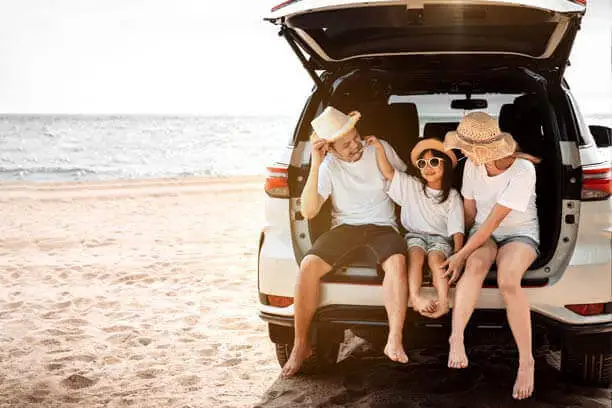Eight Tips for a Safe Summer Road Trip


Road trip! Hitting the open road and seeing the country makes for a fun family vacation, full of time together, games, sights, snacks and memories. Of course, a road trip also brings the need to be ready for emergencies. Car travel safety is imperative at any time, but especially on a road trip, when some long-distance driving tips can help keep you safe. Road trip necessities might include some fun snacks and favorite music, but also a safety kit.
So, whether you’re headed down the Pacific Coast Highway, along the Florida Keys or through national parks, here are the road trip essentials you can’t afford to skip — the ones that will keep you all safe.
The first key to road trip safety is ensuring your vehicle is in tip-top shape. It’s important to tackle this road trip safety checklist the week before your big adventure, which will reduce stress. Make sure everything’s good to go and ensure your roadside assistance coverage is active to keep your trip from being over before it really gets going.
Prioritize these points during your pre-trip inspection:
Safety first: You should always keep a roadside emergency kit handy, but it’s especially important for summer road trips. For ultimate road trip safety, your kit should have a mix of first aid essentials and survival supplies, like non-perishable food, water, a phone charger and a flashlight. Include vehicle supplies like jumper cables and a spare tire that can help in the event of a flat tire, dead battery and more.
Also, even if you don’t end up needing these staples, you might be able to help someone along the way who does.
Our precious and sometimes rambunctious cargo can be distracting if we’re handing out snacks or calming pets on the highway. A good first step is to ease their anxiety and keep them comfortable, whether that’s with a blanket from home or their favorite treats. You should always secure pets with a harness. If your child is in a car seat, now’s a great time to confirm the car seat is properly fitted. Distractions make the road unsafe for everyone, so plan ahead to minimize them.
Remember when we used to rely on the massive family atlas during a cross-country road trip? Those days are long gone, but don’t forget that over-reliance on technology can sometimes go awry.
What happens if your GPS is on the fritz or your phone dies? What if you end up in an area that doesn’t have great data service? Planning the day’s route in advance will help you prepare for the unexpected.
Download maps for offline viewing to your cell phone and consider using a phone mount to safely view your maps. It’s also smart to consider buying a new paper map to stash in your glovebox, just in case.
If you’re storing cargo on your car’s roof, review your roof’s capacity limits and measurements before the big day. Everything should be properly secured with ratchet straps, both length- and width-wise. Be sure to do a test drive! If you’re playing trunk Tetris, ensure your rear view isn’t obstructed. You don’t want to be battling your cargo at every stop you make.
While you’re not likely to encounter a July snowstorm, you never know what summer weather will bring — and you want to be prepared for severe weather. Tornado season in the Upper Midwest is in June and July, and you might encounter a haboob (dust storm) in Arizona in August. Check your route’s forecast for thunderstorms, hail, bad weather and extreme heat — then plan accordingly.
Shield your eyes and skin from the bright sun, especially on long drives, with your favorite pair of sunglasses and broad-spectrum sunscreen, which protects against UVA rays that filter through glass. And yes, you need sunscreen even if the forecast is cloudy: Those rays still filter through.
It’s up to you to keep yourself and family safe — the simplest way to do this is to always stay alert to the road and your surroundings. So, if you’re driving, let your passengers help with changing radio stations, looking at directions or checking for amenities on road signs so you can focus on the road and the other drivers.
If you need to, pull over at a rest stop to stretch your legs. The delay is worth the safety.
At Farm Bureau, we’re committed to preventing distracted driving. Read on for our best tips to stay safe behind the wheel, and reach out to a Farm Bureau agent to make sure you’re covered before you hit the road.